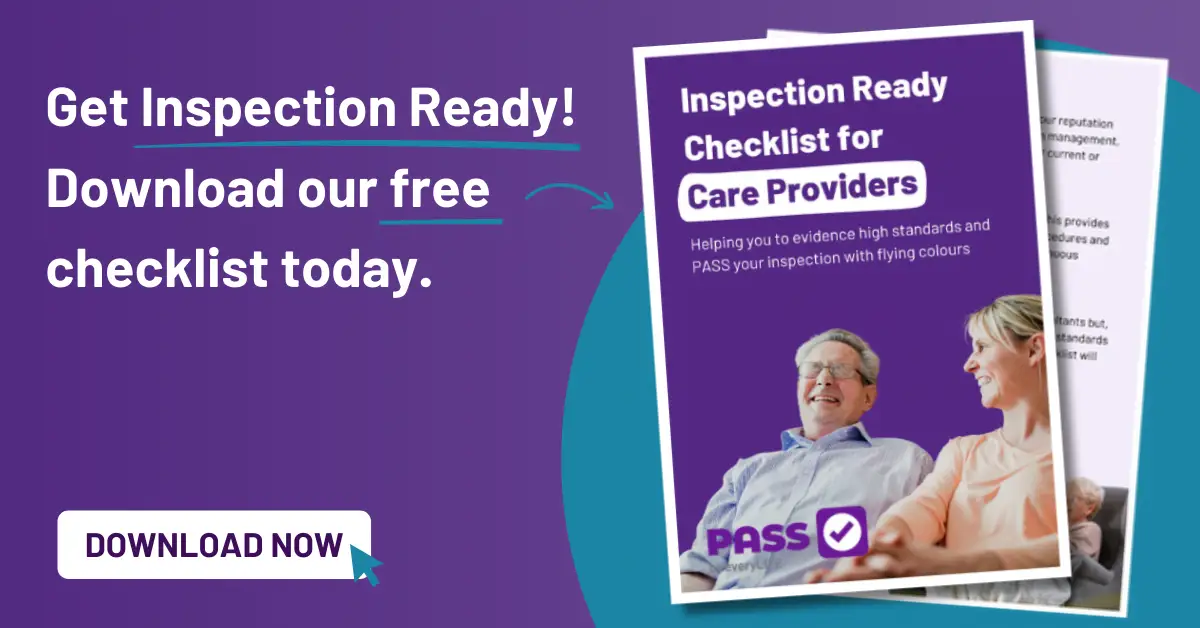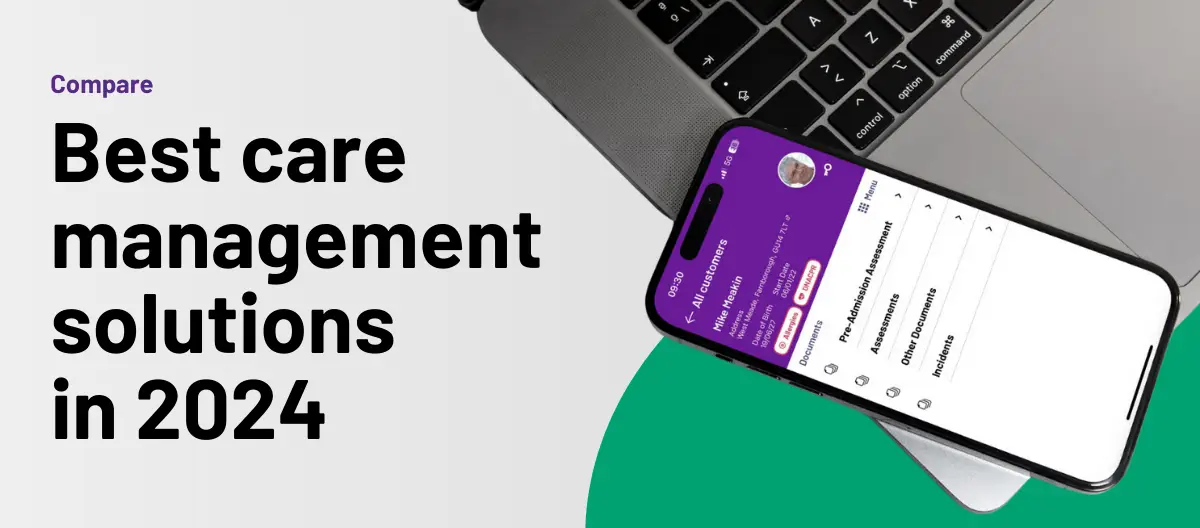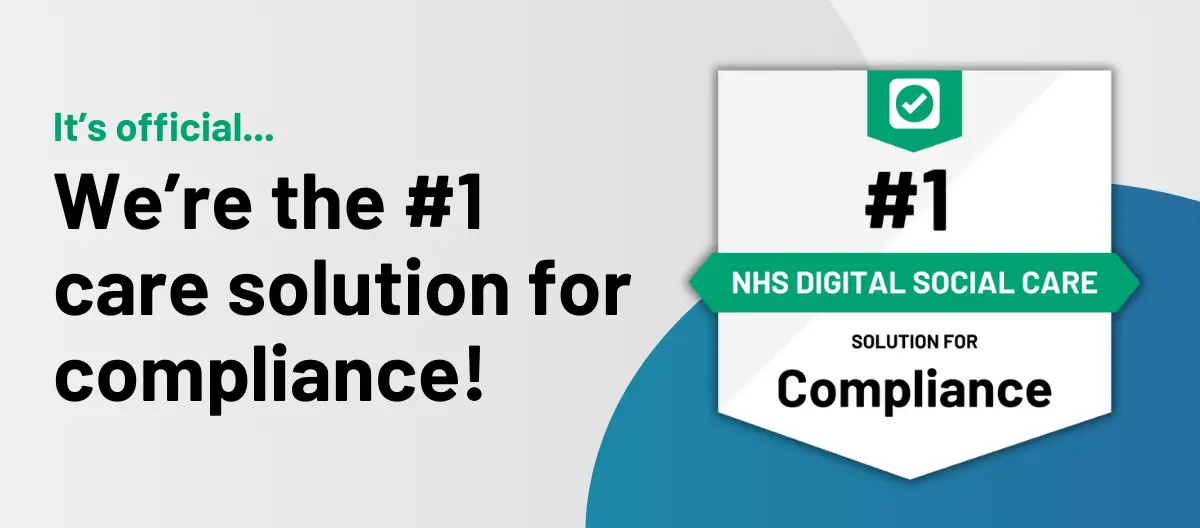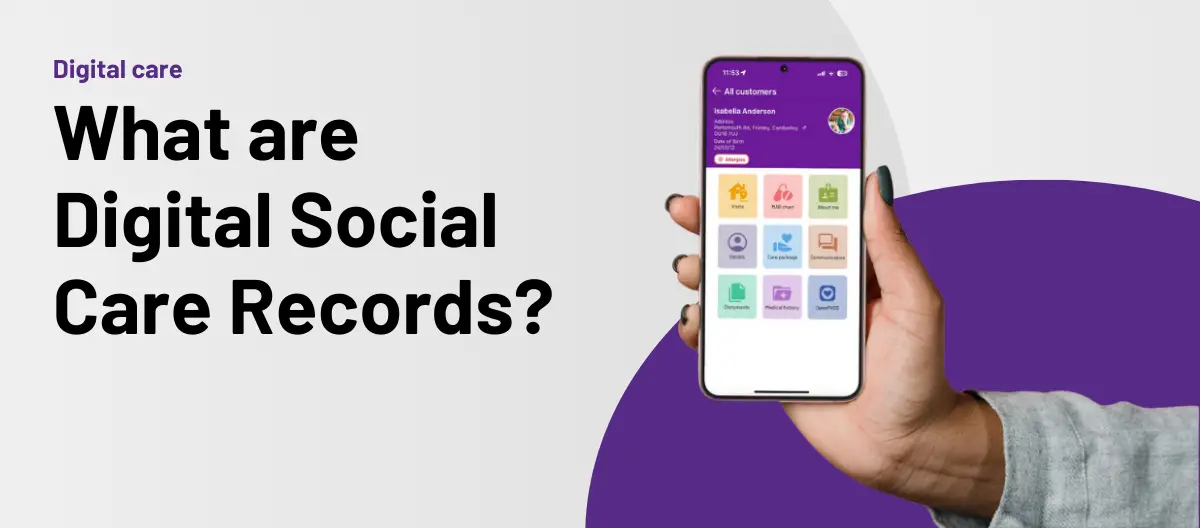This guide explores the essential framework utilised by the Care Quality Commission (CQC) during its inspections of health and social care services in England. The Key Lines of Enquiry (KLOEs) play a crucial role in assessing whether services meet the standards of safety, effectiveness, caring, responsiveness, and being well-led.
Delve into the purpose and evolution of the KLOEs, the inspection process, and the challenges faced by care providers. By understanding the KLOEs and their significance, healthcare professionals can enhance the quality of care provided, ensuring the well-being and satisfaction of service recipients.
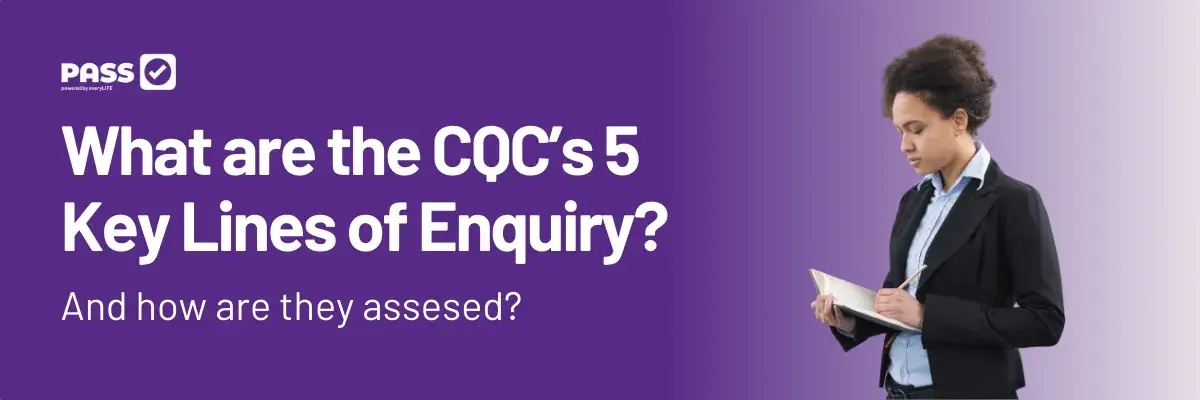
Table of Contents
Is the CQC still using the KLOEs?
Earlier this year, the Care Quality Commission (CQC) revealed plans to introduce a new, streamlined Single Assessment Framework (SAF). The aim is to simplify the process and more accurately capture the quality of care across various service types. While the CQC’s quality ratings and five core questions will remain at the heart of this new system, the existing Key Lines of Enquiry (KLOEs) will be replaced by new ‘quality statements’.
The updated framework is currently in a pilot phase and is set to be fully implemented across the health and social care sector in the first quarter of 2024. Until that time, care providers will still be evaluated based on the existing framework, with KLOEs serving as the foundation for inspections.
For more information, you can read the official announcement about the new CQC single assessment framework.
What are the CQC's Key Lines of Enquiry?
The Care Quality Commission (CQC) draws upon various criteria in its independent regulation of health and social care services in England. These criteria offer vital benchmarks for the provision of safe, compassionate and people-focused care. A standout example of this is how the CQC evaluates both domiciliary and residential care services using the Key Lines of Enquiry (KLOEs).
The KLOEs are used by inspectors during CQC inspections to evaluate whether a service is meeting 5 important standards for care: safe, effective, caring, responsive, and well-led. The KLOEs cover a range of areas, from service management and leadership to personal care and support.
Ultimately, the CQC requires assurance that people receiving care are having their independence fully supported, are being empowered to live well and be involved in the care they receive. This means the KLOEs are particularly focused on whether those receiving care are benefitting as much as possible from a person-centered approach.
What is the difference between the standards and KLOEs?
Whereas the CQC’s fundamental standards provide a general framework for healthcare providers, the KLOEs are more specific pieces of guidance so that care providers fully understand what inspectors are looking for. This helps them to meet the desired standards so that people receive thoughtful and attentive professional care and support.
In terms of the evaluation system, the CQC marks care providers on each of the 5 KLOEs using a 4-point scale: Outstanding, Good, Requires Improvement, and Inadequate. The overall rating of the healthcare provider is then determined based on their performance in each of the 5 categories.
How have CQC KLOEs and inspection processes evolved over time?
The CQC was established in 2009, and since then it has been the main regulatory body for responsible health and social care services in England. Over time, its approach to inspections has evolved from checking regulatory compliance to a more risk-based approach that assesses the quality of care and its impact on recipients and their loved ones.
In 2013, the KLOEs were introduced to replace the Essential Standards of Quality and Safety that had been in place. The KLOEs are based on the fundamental principles of safe, effective, caring, responsive, and well-led care. They are used as a framework to assess whether a service is meeting the requirements of the Health and Social Care Act 2008 (Regulated Activities) Regulations 2014.
Since their introduction, the KLOEs have undergone several revisions to reflect sector-wide changes. For example, in 2016, the KLOEs were updated to include a new category of ‘responsive’ care. This category focused on the ability of care providers to adapt services based on people’s changing needs, preferences, and circumstances.
The CQC inspection processes have also evolved. Initially, inspections were carried out at regular intervals on a predetermined schedule. However, in 2014, a more flexible, risk-based approach to inspections was introduced. This meant that services were inspected more frequently if they were found to be providing poor-quality care or were identified as high risk.
The inspection process was updated again in 2017, which involved the introduction of a new methodology called ‘The State of Care‘. Going forward, services would be inspected in more depth and with a greater focus on the quality of care provided to service recipients. The methodology involved gathering evidence from a range of sources, not just those who used the services but also their families as well as carers and other staff.
In terms of the evaluation system, the CQC marks care providers on each of the 5 categories using a 4-point scale: Outstanding, Good, Requires Improvement, and Inadequate. The overall rating of the healthcare provider is then determined based on their performance in each of the 5 categories.
What are the five KLOEs?
The KLOEs are grouped into five key areas: safety, effectiveness, caring, responsiveness, and well-led. We’ve explained each one in more depth below:
Safety
This key area covers how the safety of service users and staff is managed, including:
- The storage, administration and recording of medicines
- Measures for preventing and controlling infections such as cleaning, hygiene and waste disposal.
- Health and safety risks, including fire safety, equipment safety and environmental risks.
- The management of safeguarding concerns, including the reporting and investigation of abuse or neglect.
Effectiveness
Effectiveness involves how well the service achieves good outcomes for service users. This includes:
- Ensuring that care and treatment is delivered in a way that meets residents’ individual needs.
- Evaluating whether staff have the necessary skills and knowledge to provide effective care.
- Monitoring and improving the quality of care provided to residents.
- Making sure that residents have access to appropriate healthcare services, such as GP and dental services.
Caring
The Caring category covers the extent to which service users are treated with kindness, respect, and dignity. This includes:
- Making sure that residents are treated with empathy and compassion.
- Checking that staff actively listen to and act on residents’ wishes and needs.
- Providing emotional support to residents and their families.
- Promoting residents’ independence and supporting them to participate in enriching and enjoyable activities.
Responsiveness
This key area covers how well the service can be adapted to meet changing needs and requirements:
- Regular reviews of residents’ care plans and subsequent updates
- Responding to any complaints and concerns in a timely and appropriate manner.
- Providing residents with access to activities and services that meet their individual needs.
- Ensuring that residents’ end of life care preferences are understood and respected.
- Whether staff have received appropriate training and support to ensure they can respond effectively to the changing needs of residents.
Well-led
This key line of enquiry covers the leadership, management, and governance of the service. This includes:
- Whether there is effective leadership and governance in place to support the delivery of high-quality care.
- Checking that staff are well-supported and motivated to provide high-quality care.
- Ensuring that the senior home has a positive culture that promotes the well-being of residents and staff.
- Determining whether care facilities and homes are financially viable and sustainable.
- Understanding what training and support has been offered to senior leaders so that they continue to effectively manage care facilities.
How are KLOEs utilised during CQC inspections?
During CQC inspections, KLOEs are assessed through a variety of methods: direct observations, interviews with staff, clients and their families, and an in-depth review of all existing documentation and records.
Each KLOE has a set of sub-categories or prompts that are used to guide the assessment process. For example, under the Effective KLOE, sub-categories include “Safe and effective prescribing”, “Effective pain management”, and “Appropriate and timely treatment and care”. These sub-categories provide specific areas of focus for inspectors to evaluate and score.
As previously mentioned, the CQC uses a 4-point scale, ranging from “Outstanding” to “Inadequate”. The score is based on the evidence collected during the inspection and is assigned to each of the sub-categories within each KLOE. These individual scores are then combined to provide an overall rating for the care service.
Care providers must understand the specific and prompts for each KLOE, as well as the scoring system. This can help them to identify areas of improvement as part of their preparation for upcoming inspections.
Additionally, care providers should ensure that they have accurate and up-to-date documentation and records, and that their staff are trained and aware of their responsibilities under each of the KLOEs. Regular internal audits and quality assurance processes can also help to identify areas of improvement to evidence compliance with CQC standards.
Mandatory elements of the CQC’s inspection process

The following elements are an essential part of the assessment process, as they offer the most relevant insights into the provision of safe, effective and people-focused care:
- Gathering and reviewing information: Inspectors will gather and review information about the care provider, including previous inspection reports, complaints, and feedback from people who use the service.
- Observing care delivery: Different areas of the service will be observed, in order to assess interaction between staff and service users and to identify any areas of concern.
- Talking to people who use the service and their families: Inspectors talk to people who use the service and their families to understand their experiences and gather feedback.
- Checking records: Records will be scrutinised to see whether they are accurate and up-to-date, so that the service is meeting legal and regulatory requirements.
- Assessing leadership and management: Leadership and management are evaluated to ensure that there is a clear vision for the service, adequate resources are available, and staff are well-trained and supported.
- Judging the quality of care: Based on the evidence gathered, inspectors make a judgement about the quality of care provided by the service.
How do I achieve a positive rating during my inspection?
To achieve a positive rating, managers and senior carers must lead by example and support all employees to provide excellent people-focused care. The following are what inspectors expect to see during an assessment:
- Vision and goals: A clear and cohesive strategy for delivering high-quality care and promoting a positive culture within the service. The management team should advocate the attitudes, values, and behaviours of a person-centred, open, inclusive, and empowering culture. This will help staff feel comfortable at work and take pride in being part of the team.
- Governance and compliance: A governance framework that ensures clear responsibilities and understanding of quality, risk, and regulatory requirements. Adequate training for staff should focus on the responsibilities and accountability of all levels, including legal requirements such as CQC registration, safety, and public health-related obligations.
- Engagement: Processes that involve and engage clients, their loved ones, staff, and the public. The service should demonstrate how they encourage feedback and active participation in shaping the care they provide. This rating can also incorporate efforts to support and engage with the local community.
- Staff training: There is a strong emphasis on continuous learning, process improvements, and innovation. Tracking performance and recording the quality of care is great for identifying and optimising learning opportunities. The service should also demonstrate how they learn from incidents to improve the service.
- Partnerships with other services and agencies: This may include the local authority, healthcare providers, or safeguarding teams. Collaborating and sharing information with relevant third parties can help deliver the best care possible to clients.
What do inspectors ask and evaluate?
Inspection processes are hands-on and detailed to guarantee an accurate rating and assessment. Here is a more comprehensive look at what inspectors ask about and evaluate in each of these key areas:
Is it safe?
- Are risks to service users identified and well-managed?
- Are incidents reported and learned from?
- Are medicines managed safely?
- Are there appropriate infection prevention and control measures in place?
- Are there effective systems in place for safeguarding adults at risk of abuse?
Is it effective?
- Is the care provided evidence-based and delivered by competent and knowledgeable staff?
- Are service users involved in decisions about their care and treatment?
- Are people’s needs and preferences assessed, with care and treatment being planned and delivered in line with their individual needs?
- Is there effective communication between staff and service users and their families?
- Are end-of-life care arrangements effective and well-coordinated?
Is it caring?
- Are service users treated with kindness, respect, and dignity?
- Do staff promote a culture of person-centred care?
- Are service users supported to maintain their independence and choice?
- Are the emotional, social, and spiritual needs of service users being met?
- Do staff listen to and respond to service users’ needs and concerns?
Is it responsive?
- Are service users’ needs identified and responded to in a timely and effective way?
- Are complaints handled effectively, and is feedback from service users and their families acted upon?
- Are service users supported to maintain their relationships with family and friends?
- Are services well-coordinated with other providers, such as hospitals or community services?
- Are service users supported to maintain their physical, mental, and emotional wellbeing?
Is it well-led?
- Is there a clear and effective leadership and management structure in place?
- Are there effective systems for assessing and monitoring the quality of care provided?
- Are staff well-supported and appropriately trained?
- Are there effective governance and accountability arrangements in place?
- Does the service work collaboratively with other organisations to ensure the best possible outcomes for service users?
Can digital care software improve inspection ratings?
Digital care management solutions, like PASS, are supported by the CQC and can improve inspection ratings by enhancing various aspects of care provision.
Firstly, it enables accurate and real-time documentation, ensuring that records are up-to-date and complete. This helps care providers demonstrate compliance with regulations and provide evidence of high-quality care.
Digital software also streamlines communication and coordination among care teams, reducing the risk of miscommunication and ensuring that care plans are consistently followed.
Our solution also incorporates built-in compliance features, such as automated alerts and reminders, ensuring that important tasks and assessments are not overlooked.
Read more: How Liverpool City Council care providers improved ratings using PASS care management software
What are some of the challenges for meeting KLOEs and how can they be solved?
Some of the common challenges experienced by care providers in relation to meeting KLOEs include:
- Sufficient staffing: Ensuring there are enough qualified and trained staff to meet the needs of residents can be a challenge, particularly when it comes to recruitment and retention. This can be avoided by investing in training and development programmes, offering competitive salaries and benefits, and creating a positive work culture.
- Open communication channels: Effective communication is crucial in any care setting. However, communication breakdowns between staff and residents, as well as between staff members, can lead to misunderstandings, errors, and dissatisfaction. This can be prevented by resolving any skills gaps related to communication, and ultimately promoting open and transparent communication.
- Accurate and detailed record keeping: Care providers are required to keep accurate records of care provided to residents. However, this can sometimes become less of a priority when more urgent issues arise. Ideally all care providers will be trained on using modern electronic record-keeping systems to help alleviate this administrative burden.
- Health and Safety compliance: The health and safety of residents is a top priority for care providers. However, meeting health and safety standards can be challenging, particularly when it comes to infection control and medication management. This can be addressed by developing, implementing and refining comprehensive health and safety policies and procedures.
- Building strong leadership and management: Effective leadership and management are key to the overall success of a care home. However, some providers may experience obstacles such as communication barriers, lack of transparency, and inadequate supervision of staff. The onus is on leaders and managers to create a culture of accountability, provide regular training and support, and encourage open communication.
Key takeaways
The KLOEs offer a vital benchmark for care providers in their efforts to support people’s health and wellbeing. Effective care is not just about management and efficiency, it’s about treating people with compassion and empathy, and understanding the need to adapt to clients’ varying needs and concerns.
Inspections can sometimes be daunting, but the KLOEs offer a clear and cohesive template, assuring residential and domiciliary providers that they are helping people receive the care they need and deserve.
Useful Resources

Looking for extra support with KLOEs?
Our all-in-one care management solution enables you to track and report on all aspects of your care delivery and easily export digital reports for exceptional care inspections.
